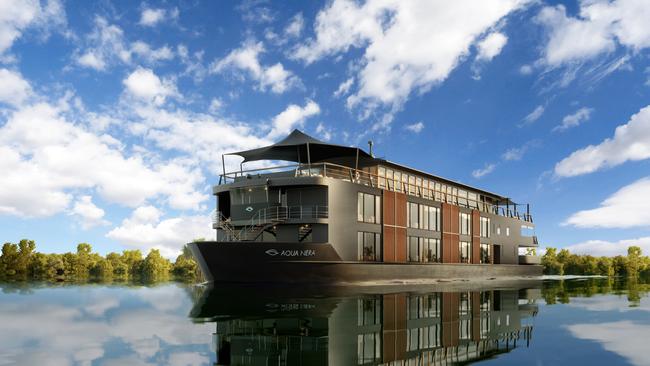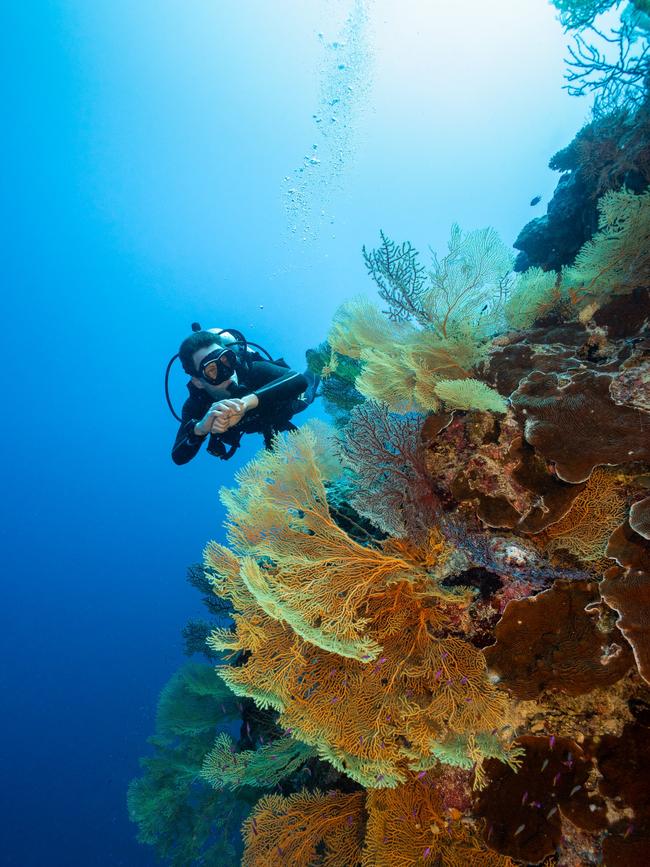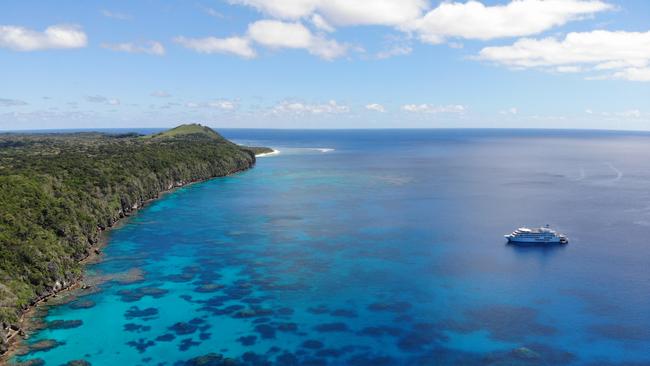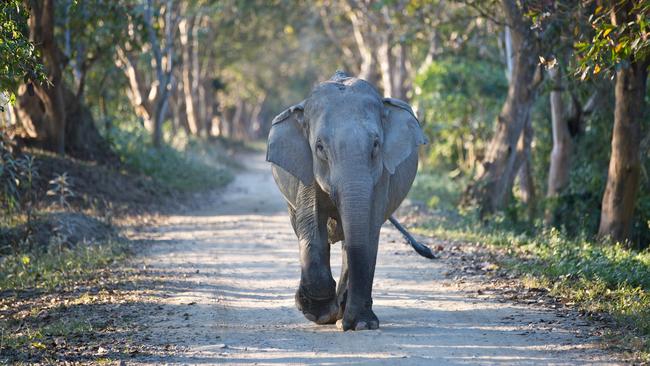Expedition cruises: Greenland; Antarctica; Amazon; India; Scotland; Great Barrier Reef
These expedition adventures deliver unforgettable encounters with nature and humanity.

WESTERN ISLES, SCOTLAND
Basking sharks are the big-ticket item on many a Hebridean cruise, but for me it’s a humble “bottling” grey seal, swaying unsteadily as it cranes high out of the water to goggle at me, its whiskers backlit by the setting sun. Minke whales, porpoises, otters and orcas ply this archipelago of more than 40 wind-streaked islands off Scotland’s west coast, accompanied by eagles, guillemots, shearwaters and shags. Or you might see countless puffins careening, feet-first, into the cliffs, or a stag with antlers thrown back against an island skyline. Small-ship operator St Hilda Sea Adventures provides the chance to experience all these, along with trips up lochs and into old clan country, and visits to fine whisky distilleries. Three sturdy vessels each offer low-impact cruises (maximum 11 passengers), excellent home-cooked food to keep the cockles warm, and comfort over luxury. Think: deep leather sofas, soft tartan rugs, brass fixtures and shiny trays jingling with single malts. If you’re lucky, you’ll be anchored in a cobalt-blue inlet, tumbler in hand, swapping stares with the most appealing of pinnipeds.
Best momentCruising past circuses of puffins, crammed on to cliff ledges.
EMMA VENTURA
AMAZON RIVER, PERU
Aqua Expeditions’ itineraries of three, four or seven nights depart the (relatively) accessible port city of Iquitos to take adventurers deep into the Amazon’s jungle of mirrors. Naturalist-led outings uncover all manner of exotic wildlife, from sloths and rowdy howler monkeys to poison frogs, pink-toed tarantulas, and bulging anacondas. Clouds of colourful birds glide overhead while pink dolphins trace arcs in the turbid waters. Shipboard amenities are first-rate, from roomy 30sq m suites to indoor and outdoor lounges and bars; aboard the new 20-suite Aqua Nera, there’s even a gym, games room and plunge pool. Suites are airconditioned with glass walls revealing the dynamic river scenery, best viewed from thoughtfully positioned daybeds. Menus by star chef Pedro Miguel Schiaffino draw heavily on Amazonian ingredients such as paiche fish, wild almonds and jungle fruits, all of which pair surprisingly well with frothy pisco sours. As well as riverine and jungle safaris, there are village visits, fishing for piranha (delicious deep-fried) and time to marvel at how, in its more serene tributaries, the world’s most formidable river can seem so close to paradise.
Best momentSwimming with joyful village kids in Clavero Lake, an Amazon estuary. aquaexpeditions.com
KENDALL HILL

SUBANTARCTIC ISLANDS
Aboard Ponant’s boutique cruiser L’Austral, we’re headed south of New Zealand into the “Albatross Latitudes”, the so-called Roaring 40s and Furious 50s, to the Subantarctic Islands, literally at the end of the Earth. The Snares, Antipodes, Auckland, Campbell and Bounty groups are NZ territory, while the larger Macquarie Island is Australian. Many of these World Heritage-protected clusters are off-limits for landing but daily excursions aboard L’Austral’s Zodiac boats plus trekking, where possible, bring us face-to-face with the creatures and flora of this great southern ark. Penguins here come in at least five varieties (rockhopper, king, royal, gentoo and yellow-eyed) while noisy petrels, skuas, terns, prions and mollymawks throng the skies and rookeries. Then, enter the superstar, Baudelaire’s “prince of cloud and sky”, the albatross. Languid fur seals, sea lions and elephant seals loll on the beaches and cliffs of their amphibian aquarium. Fewer than 700 people visit “the Subs” each year, less than the number of climbers who reach the summit of Mt Everest. Meanwhile, L’Austral’s stateroom accommodation and restaurant excellence embody customary French finesse.
Best moment Framed in the restaurant’s water-level picture windows, a pod of orcas keeps pace with the ship.
JOHN BORTHWICK

OSPREY REEF AND CORAL SEA ENVIRONS
We are well rested, fed and briefed as we head out each morning on the Xplorer landing craft of Coral Geographer, the new addition to Cairns-based Coral Expeditions’ fleet. A Covid lockdown in the west has made Broome, our original destination, off limits, so we are on a genuine exploration of the Great Barrier Reef and Torres Strait, heading for our most remote and exotic location, Osprey Reef, 340km northeast of Cairns and beyond the continental shelf. That water to our right is a foreboding blue and, indeed, it’s a 2000m drop to the sea floor. Osprey is in a lagoon atop a submerged mountain with sheer walls, its corals protected and wondrous. It’s considered one of the world’s best dive sites and I feel a ripple of excited trepidation as I slip into the water even for a gentle snorkel. Revealed is a world of turtles and fish of shapes and colours beyond wild imagining. And plenty of sharks, intent on their own business.
Best momentCloser to the Queensland coast, a small group lands by Zodiac at Davie Cay and, late in the breeding season, spots a sole brown booby learning to fly. Go, baby, go.
GRAHAM ERBACHER

ANTARCTICA ON ICE
“The first thing you do is dig your own coffin,” instructs the leader of our Antarctic camping adventure. Dropping the bombshell that no tents are provided, he’s explaining how a hole in the ground should do the trick. I’m one of 20 passengers who’ve opted to swap heated ship cabins for a night on ice. Each armed with a bucket to use as a toilet, we grab shovels and start digging. Placing a sleeping bag in the void, I slip into my “snow swag” before contemplating advice to wear only thermals. Dubious, I remove four layers of clothing to stuff into my backpack to use as a headrest. (Pillows are not permitted in this immaculate environment.) A few men head off to a mountain. My neighbours drink and chat until midnight and snore for the next five hours, although I can barely hear anything but the squawking of at least 1000 restless penguins. I doze off minutes before the wake-up call. On return to the ship, the non-sleeping hikers describe the magical, changing light; the passing, puffing whales; and how the mountains look lit from the inside with a golden lamp. Next time, I’m staying up all night and filling my bucket with coffee.
Best momentWaking at sunrise, I hear someone playing the flute.
LOUISE GOLDSBURY

GREENLAND COAST
Reefs of sea ice glitter like frozen surf and slow our approach to Northeast Greenland National Park. At 972,000sq km, this is the world’s largest national park and its least visited. We’re aboard Hurtigruten Expedition’s MS Roald Amundsen, the world’s first hybrid-powered expedition cruise ship. Summer in the High Arctic means it’s sunny at midnight so we’re alerted at random hours of day or “night” to sightings of whales, polar bears and even a rare narwhal or two. We slip into the vast Scoresby Sound, the world’s largest fjord system, with its maze of ice-capped ramparts towering above the ship. Distant glaciers boom their cannon-like salvos as thousands of tonnes of ice calve into the warming sea. Deeper, within the Sound’s Iceberg Cemetery, we dodge snapped-off chunks of Ice Age that litter the channel like a highway pile-up. Life on board is Nordic flash, with spa, sauna, fine dining, huge cabin windows, a unique Science Centre and lectures on polar exploration, climate and fauna.
Best momentSea-kayaking on Hekla Havn Bay, where drifting bergs shaped like galleons and ice angels float above their own reflections.
JOHN BORTHWICK

WEST PAPUA
The staple of any stop in a remote village is a traditional welcome ceremony. Often these opportunities to “meet the locals” feel trite or uncomfortable, but not in Syuru, West Papua. Arriving after two days at sea from Darwin, Coral Adventurer passengers transfer to smaller boats to reach the town built on stilts over a tidal swamp. As we approach, dozens of dugout canoes emerge from the mangroves, paddled by muscular men and teens smeared with war paint. Shouting and chanting, they surround us in a display of strength that could easily be intimidating. These are the Asmat people, great warriors known for headhunting and cannibalism as recently as 60 years ago. According to our guide, performing for tourists allows the elders to teach the youth about their culture, while the community is supported by fees paid by cruise companies such as Coral Expeditions. Led ashore, we join a ceremony to launch a new canoe, merging with a large crowd of grass-skirted locals dancing, singing, drumming and waving spears. It feels like a dance festival, interrupted only by children wanting to practise their English and take photos of the foreigners in cloth hats, plastic sunglasses and T-shirts pinned with name badges.
Best momentEncountering the unexpected, such as a naked man on a canoe.
LOUISE GOLDSBURY

FIJIAN ISLANDS
The MV Reef Endeavour wasn’t idle during lockdown. Lucky locals set sail aboard the Fiji-based ship, with just 63 suites, staterooms and cabins, to experience the far-flung realms of their archipelago. A seven-day cruise to the Lau island group in the east and Kadavu in the south proved so popular it’s been added as an abridged version of Captain Cook Cruises Fiji’s 11-day Lau and Kadavu cruise. But I don’t know why you’d rush the experience as it’s a rare chance to cruise right off the grid into otherworldly moments that include intriguing culture (some influence from neighbouring Tonga has seeped into Lau life) and eye-boggling underwater sights such as sunlit coral gardens, Christmas tree worms, dolphins, turtles and rays. The company encourages passengers to be citizen scientists and log sightings on the iNaturalist website. Among the fish that might cruise past your snorkel mask are tomato clownfish and checkerboard wrasse. The super-friendly crew includes a marine biologist to help identify any mysterious creatures.
Best moment Both Lau cruises stop at crescent-shaped Fulaga Island, where mushroom-shaped coral limestone islets sprout from the Listerine-blue lagoon. Those green feathers poking from their caps are the endemic Thurston’s palm.
KATRINA LOBLEY

INDIA
From humble beginnings in the Tibetan Himalaya, the Brahmaputra River gathers volume and strength over its 3850km course to empty into the world’s largest delta. “This river waters more than one-third of the world’s population,” claims Sanjay Basu, creator of the MV Mahabaahu, a 23-cabin vessel that plies the mighty waterway between eastern Assam state and Kolkata. Week-long itineraries are a wonderful medley of temples, tribal minorities and ruins of the ancient Ahom kingdom. There are tea breaks on an actual tea plantation, sandbank cricket and sundeck yoga, and a visit to the shapeshifting sand island of Majuli, India’s largest. The highlight is World Heritage-listed Kaziranga National Park, home to more than a dozen of India’s endangered mammals, including the one-horned rhino and Bengal tiger. Sightings are reliable on excursions by 4WD and tender launch led by engaging naturalists. Despite major flooding in the area earlier this year, Basu says: “We are getting a tremendous number of tiger, rhino, elephant, wild buffalo, freshwater dolphin and bird sightings.” Life onboard is relaxed and comfortable with well-appointed cabins and even a pool and tiny spa. Sunset G&Ts on the roof deck are de rigueur.
Best moment A tie between sighting a Bengal tiger framed by riverbank grasses and frolicking with a baby elephant, both at Kaziranga.
KENDALL HILL

MORE TO THE STORY
The Galapagos archipelago of Ecuador should be firmly in the sights of adventurous voyagers in 2022. Due to launch in May, Aqua Expeditions has announced a 16-passenger superyacht, Aqua Mare, due to operate cruises of seven or 14 nights.
Meantime, depending on the season, Silversea’s new 51-stateroom Silver Origin expedition ship has seven-day round trips from San Cristobal or one-way between San Cristobal and Baltra, each calling at Fernandina and Isabela islands and with a focus on geographic biodiversity and wildlife. Passengers have the opportunity to snorkel with sea turtles around Fernandina and encounter Galapagos penguins in Isabela. Other itinerary stops are at the “bird islands” of Genovesa and Espanola, plus Santa Fe, home to an endemic iguana unique to the region. Silver Origin presently has the highest ratio of guides and Zodiacs per guest of any luxury vessel operating in the Galapagos.
SUSAN KUROSAWA

To join the conversation, please log in. Don't have an account? Register
Join the conversation, you are commenting as Logout